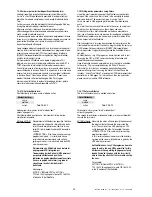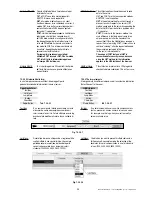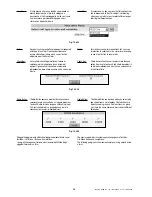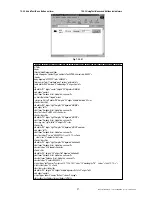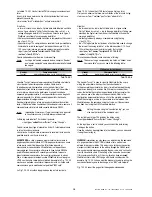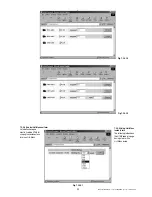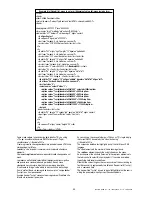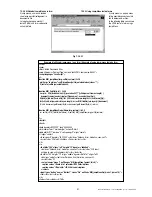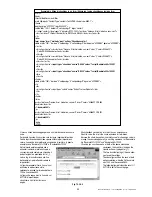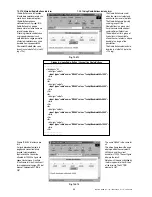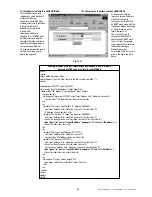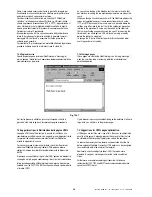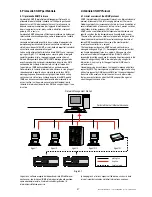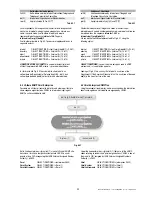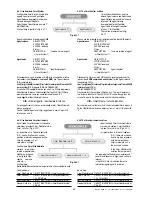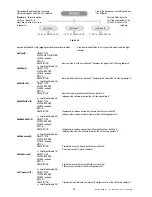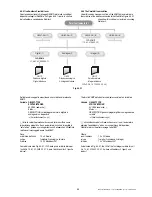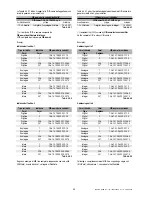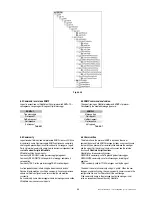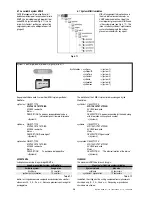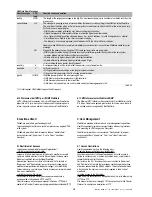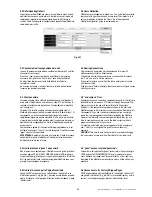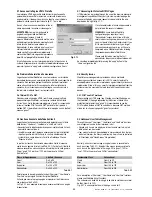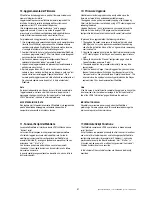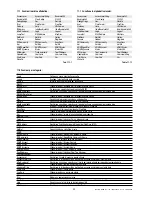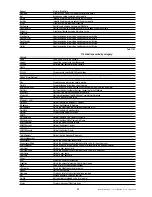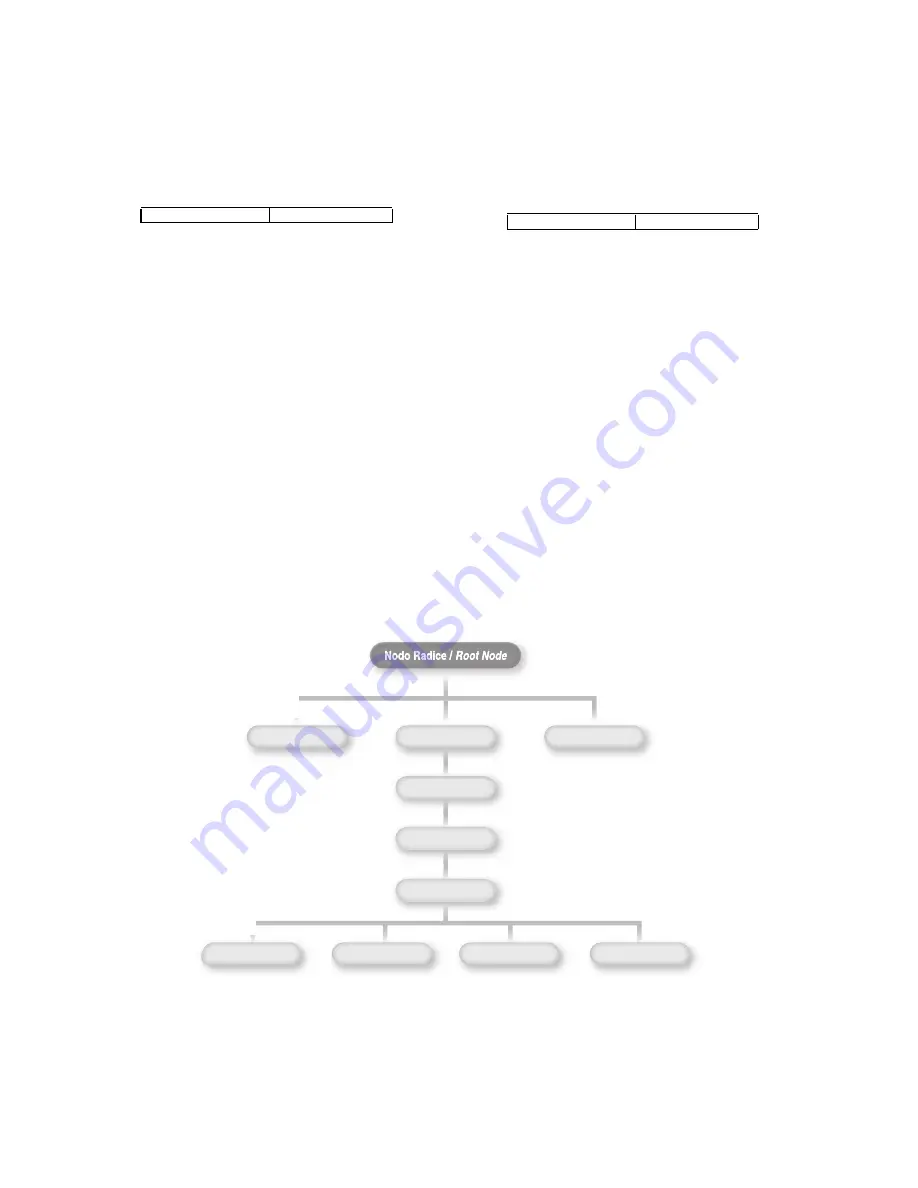
8.2 Structure of management information: gli agent MIB
Il database gestito dall’agent SNMP viene chiamato MIB (Management
Information Base), ovvero database dell’informazionedi gestione, ed è
un insieme di oggetti standard che rappresentano i valori statistici e di
controllo. Il protocollo SNMP, inoltre, permette di aggiungere ai valori
standard altri valori specifici per un determinato agent, mediante
l’utilizzo di MIB privati. Ogni oggetto MIB è costituito da due attributi
principali (Fig.8.2.1):
Oggetto MIB
Name (OID)
Value
Fig. 8.2.1
Il Name o Identificatore di oggetto (OID, Object IDentifier
) definisce
in modo univoco un oggetto gestito nella rete.
L’identificatore di oggetto, di solito, viene rappresentato in due modi:
numerico o “leggibile”, come spiegheremo nei prossimi paragrafi.
Praticamente si tratta di un indirizzo che specifica, in modo univoco,
dove si trova un oggetto nella rete.
Il
Value
rappresenta il valore della variabile associata all’oggetto.
Un agent può implementare più di un MIB. L’insieme globale degli
oggetti di un agent SNMP si chiama
MIBview
.
8.3 Assegnazione dei nomi agli OID: la struttura ad albero
del web
Gli oggetti gestiti sono organizzati in una struttura ad albero. Questa
struttura è alla base del sistema di definizione dei nomi secondo il
protocollo SNMP.
Un OID è una sequenza di numeri interi che rappresentano i nodi
dell’albero, separatati da punti (.).
Esiste anche una forma alternativa dell’identificatore che è più
facilmente leggibile rispetto a una stringa di numeri. Si tratta di una
sequenza di nomi, separatati da punti, ognuno dei quali rappresenta un
nodo dell’albero. E’ possibile utilizzare sia i numeri che la sequenza di
nomi.
La Fig. 8.3.1 illustra i principali nodi dell’albero.
La sommità dell’albero è chiamata root node (nodo radice); le
derivazioni di un nodo sono i subtree (sotto-alberi). Come si può
vedere nell’esempio dato dalla figura 8.3.1, il nodo radice ha tre
sotto-alberi: “ccitt(0)”, “iso(1)” e “joint(2)”. Iso(1) è l’unico nodo che
contiene a sua volta un sotto-albero. Gli altri due nodi spesso vengono
chiamati leaf node (nodi foglie). La Tab. 8.3.1 offre una breve
descrizione del significato di questi nodi.
8.2 The structure of management information: agent MIBs
The database, controlled by the SNMP agent, is referred to as the
SNMP Management Information Base (MIB), i.e. database of the
management information, and is a standard set of objects representing
statistical and control values. SNMP additionally allows the extension of
these standard values with values specific to a particular agent through
the use of private MIBs. Each MIB object is composed by two main
attributes (Fig.8.2.1):
MIB object
Name (OID)
Value
Fig. 8.2.1
The Name or Object IDentifier (OID)
uniquely defines a managed
object on the network.
Object identifier commonly appear in two forms: numeric or “readable”,
as we’ll see in the next paragraphs. It can be thought of as an address
that specifies uniquely where is the object on the network.
Value
represents the value of the variable associated to the object.
An agent may implement many MIBs. The global set of objects of an
SNMP agent is named
MIBview
.
8.3 Naming OIDs: the tree hierarchy structure of the web
Managed objects are organized into a tree-like hierarchy. This structure
is the basis for SNMP’s naming scheme.
An OID is made up of a series of integers based on the nodes in the
tree, separated by dots (.).
Moreover there’s a human-readable form that’s more friendly than a
string of number. This form is a series of names separated by dots,
each of which represents a node of the tree. So we can use the
number themselves or a sequence of names that represent the
numbers.
The main nodes of the tree are the following (Fig.8.3.1).
The top of the tree is called root node. Childrens of a node are called
subtrees. For example, as figure 8.3.1 shows, the root has three
subtrees, that are “ccitt(0)”, “iso(1)”, “joint(2)”. Iso(1) is the only node
that contains a subtree. The other two nodes are often called “leaf
nodes”. A brief description about the meaning of this nodes can be
found in Tab. 8.3.1.
38
Manuale WebGate - cod. +030220230 rel. 1.0 - 16.09.2003
iso (1)
org (3)
dod (6)
internet (1)
ccitt (0)
joint (2)
mgmt (2)
experimental (3)
directory (1)
private (4)
Fig. 8.3.1

